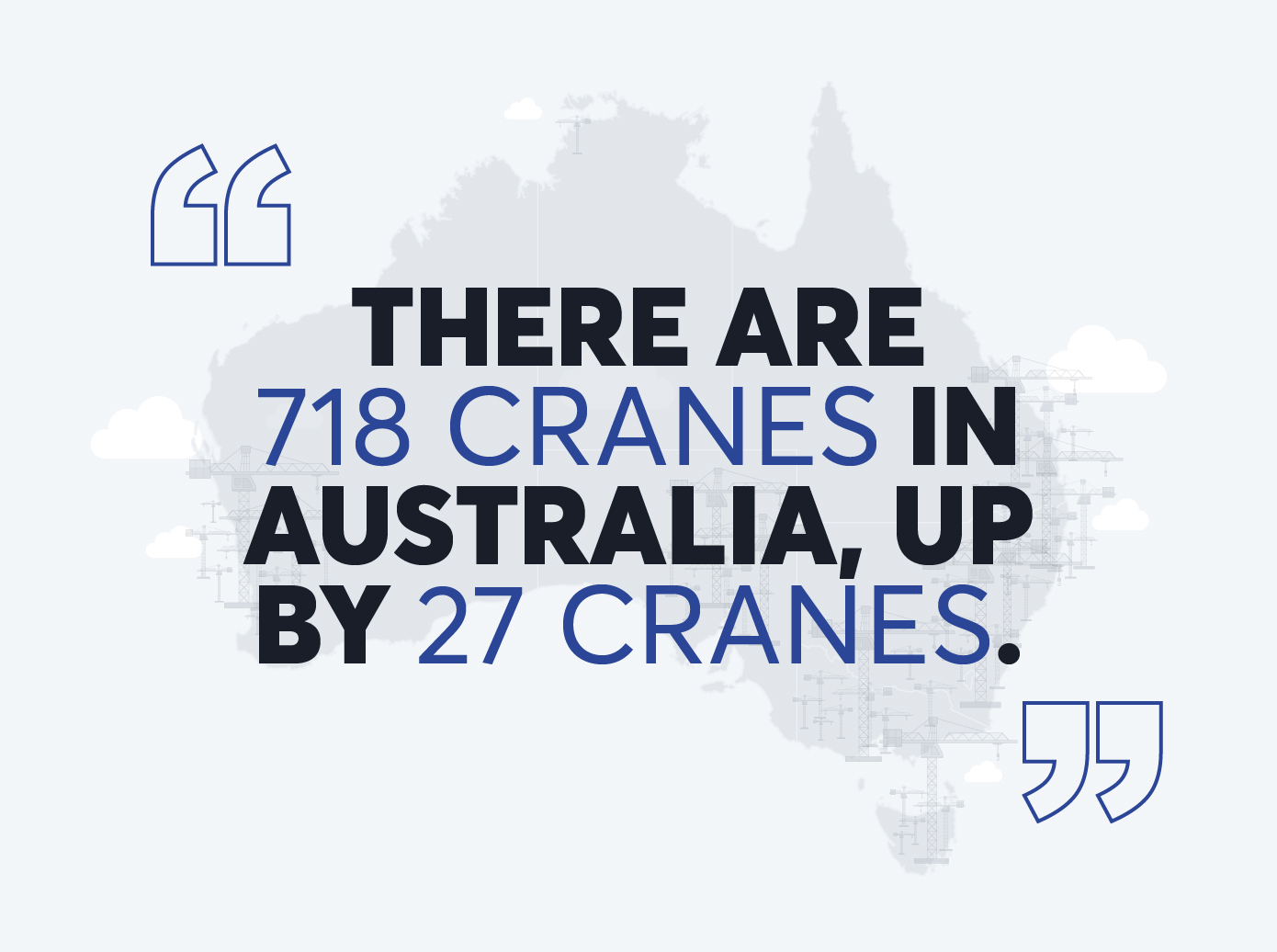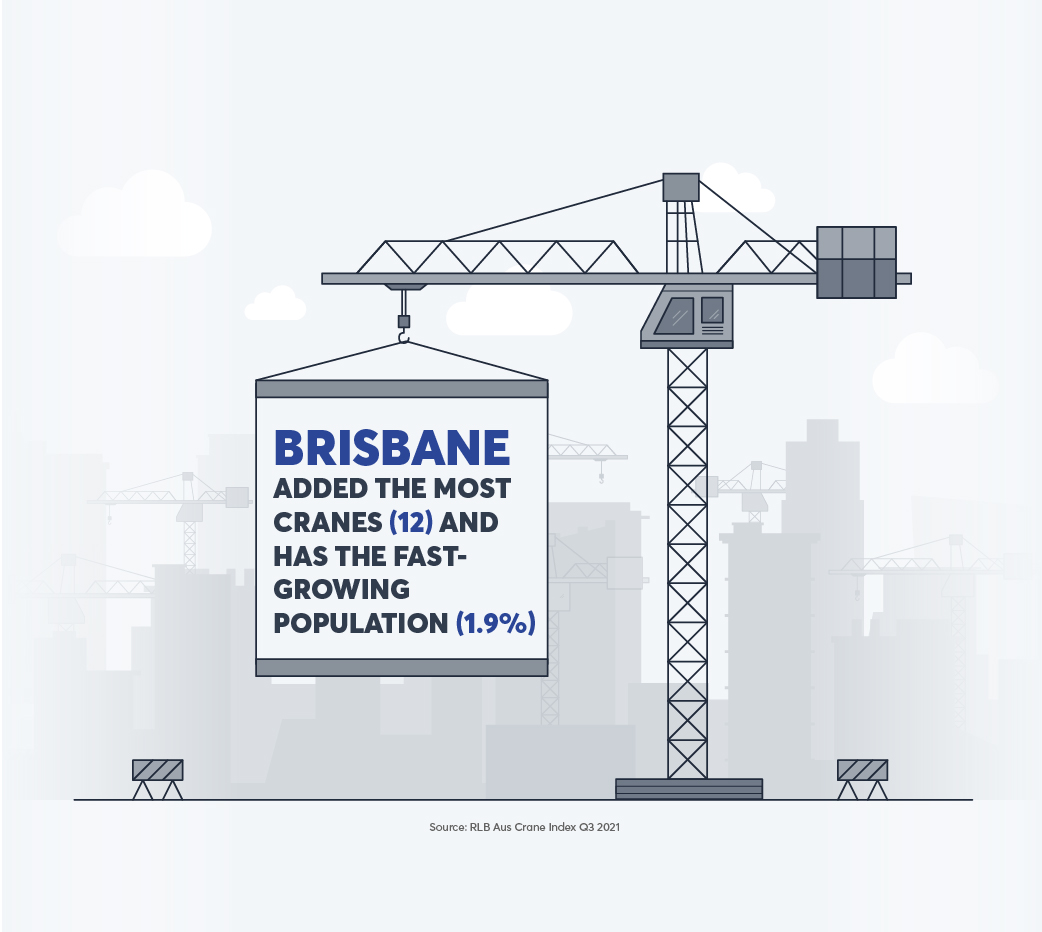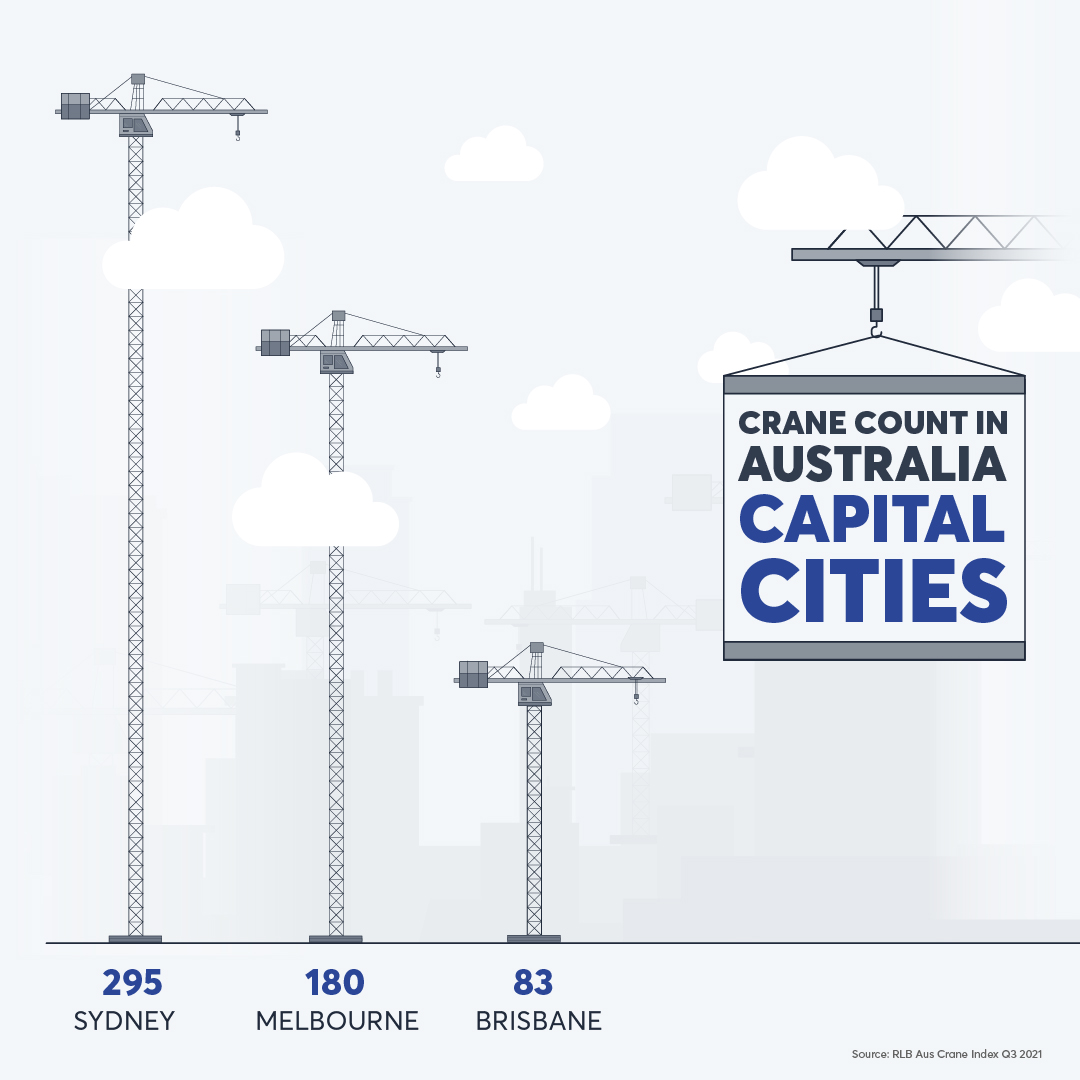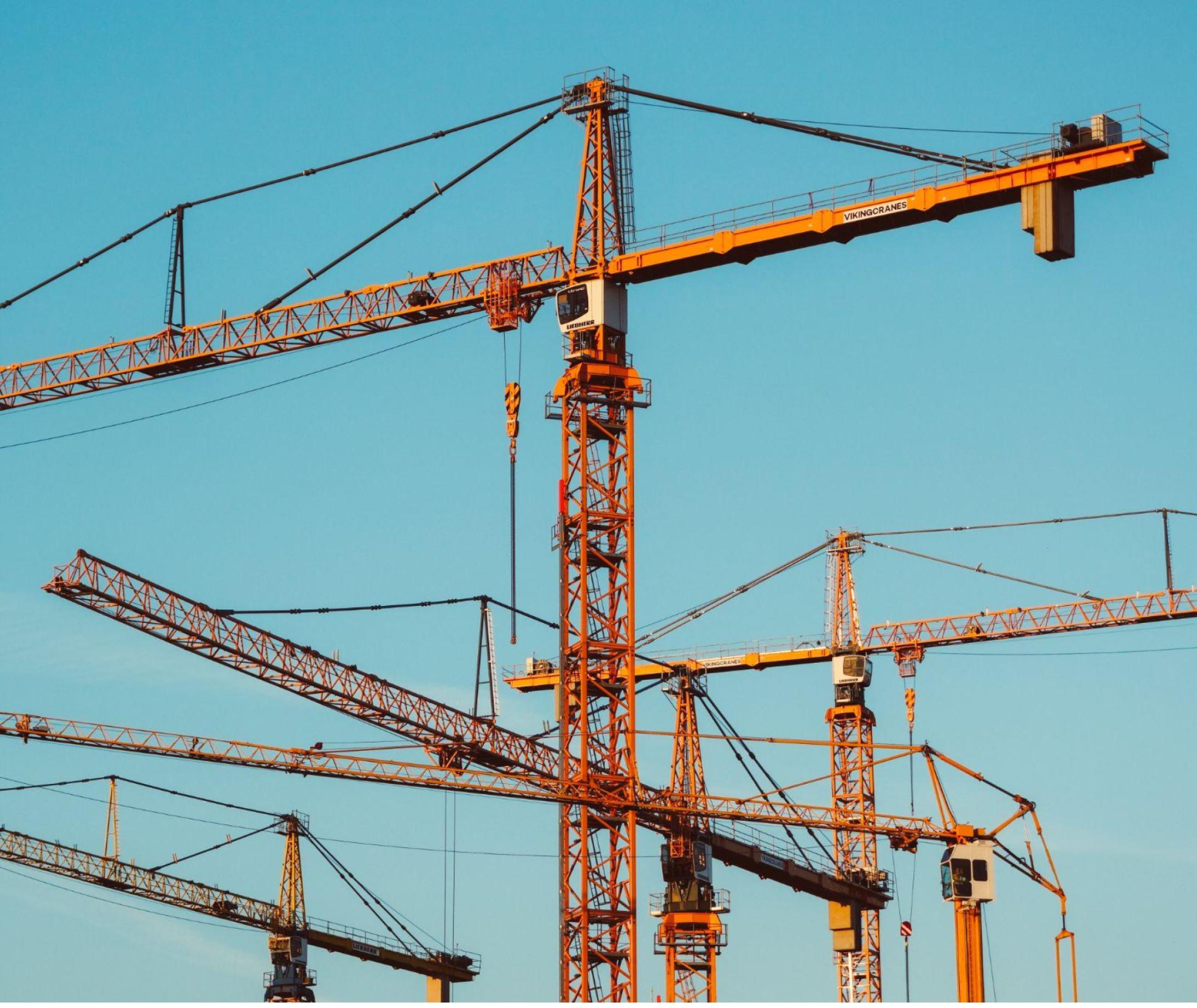Brisbane records a leading growth in cranes

The latest crane count data shows that there are 718 cranes in Australia, up by 27 cranes in the last six months. Brisbane has the most additional cranes, with an increase of 12 cranes. However, Sydney still has the most cranes with 295 cranes. Brisbane’s Queen Street Wharf project has the most cranes per project, with nine cranes.

[wpdatatable id=94]
While Melbourne’s crane count declined by 13 (and was the only crane count to decline), Melbourne still has the second-highest crane count nationally at 180 cranes. This new data shows the economic health of Australia’s construction landscape amidst the impact of extended restrictions.

Growth for regional communities
The latest ABS regional population data on people’s movements revealed a continued shift towards regional areas and a leaking of population from the capital cities since the beginning of COVID-19 and its associated restrictions. Melbourne and Sydney both experienced a loss of people through net internal migration. Melbourne lost 8,300 people (4,800 to regional Victoria and 3,400 to other states). Sydney lost 8,200 (5,100 to regional NSW and 3,100 to other states) in the March 2021 quarter. Small declines due to net internal migration are common for these cities, which have over five million residents each.

Overall, Australia has experienced slow population growth in the year to March 2021. Currently, Australia’s annual growth is at 0.1% (35,700 people). To give context, before the impact of COVID-19 in the year to March 2019, Australia grew by 394,000 – which is more than the size of the entire Sunshine Coast’s 393,000 people! This very slow population growth is due to closed international borders and a lower fertility rate, which is not uncommon during times of economic uncertainty, as outlined in our Australia Towards 2031 report.
[wpdatatable id=95]
The future of infrastructure and flourishing communities
It is likely that population growth fuelled by net overseas migration will gradually return when possible. Australia is forecast to need an additional three million homes by 2041 to meet the demands of having global destination cities along with dozens of growing lifestyle communities in coastal and inland areas. Thankfully, to meet this demand for new housing, the crane count by category of projects showed that residential projects requiring a crane increased by 23, up to a new total of 441 cranes out of the total 718 cranes in Australia.
1 RLB Aus Crane Index Q3 2021
2 https://www.abs.gov.au/statistics/people/population/regional-population/2019-20
3 https://www.abs.gov.au/statistics/people/population/regional-population/2019-20
4 https://www.abs.gov.au/statistics/people/population/regional-internal-migration-estimates-provisional/latest-release




